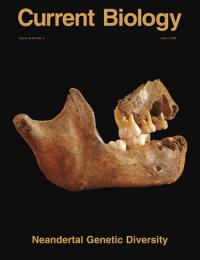
A new neandertal haplotype was recovered from a 100,000 year old specimen from Scladina cave. It confirms that Neandertals and modern humans were only distant relatives but concomitantly reveals that the genetic diversity of Neandertals has been thus far underestimated. Credits: G. FocantBy recovering and sequencing intact DNA from an especially ancient Neandertal specimen, researchers have found evidence suggesting that the genetic diversity among Neandertals was higher than previously thought. The findings also suggest that genetic diversity may have been higher in earlier Neandertal periods relative to later periods that approached the arrival of humans in Europe. Changes in genetic diversity over time are thought to reflect population events, such as low-population bottlenecks caused by disease or environmental change, as well as the influence of random genetic change. The findings are reported in the June 6th issue of Current Biology by a group of researchers including Ludovic Orlando and led by Catherine Hänni of Ecole Normale Supérieur in Lyon, France.
Neandertals were the only representatives of the genus Homo in Europe during most of the last 300,000 years, becoming extinct shortly after the arrival of modern humans on the continent around 30,000 years ago. Traces of mitochondrial DNA (mtDNA) sequences still present in fossilized bones have been used in past studies in an effort to identify and track the potential genetic legacy of Neandertals among modern Europeans. Though such genetic continuity would have been the hallmark of interbreeding between modern humans and Neandertals at the time of their European coexistence, the mtDNA sequences from the nine neandertal specimens that have been analyzed to date – and that lived around the time of the cohabitation period – do not match those found among modern humans, suggesting that little, if any, interbreeding took place.
In their new work, Dr. Hänni and colleagues now report the oldest Neandertal mtDNA sequence ever recovered. The Neandertal specimen analyzed consists in a molar of a 10-12 year-old child that lived in the Meuse valley (Scladina cave, Belgium) around 100,000 years ago. The specimen yielded 123bp of mtDNA – a very short section of DNA by modern sequencing standards, but a technical feat considering the very ancient source of tissue. The reason for choosing such an old specimen was simple: it unambiguously predates the period when Neandertals cohabited with modern humans. By comparing this sequence with already published – and considerably younger – Neandertal sequences, the researchers sought to reveal whether the Neandertal mtDNA pool exhibited long-term stability or drastic modification around the time of cohabitation with modern humans. There was a second reason to pay attention on the Scladina molar: it has only been discovered very recently. This means that all individuals who have been in contact with it are known, and their DNA could be sequenced to detect any possible contamination of the Neandertal sample by modern human DNA.
The Neandertal sequence from Scladina confirms that Neandertals and modern humans were only distant relatives – Neandertal sequences are all closer to each other than to any known human sequence. But the study also reveals that the genetic diversity of Neandertals has been underestimated. Indeed, the mtDNA from the Scladina sample is more divergent relative to modern humans than is mtDNA from recent Neandertals, suggesting that Neandertals were a more genetically diverse group than previously thought.
Source : Cell Press
 Print Article
Print Article Mail to a Friend
Mail to a Friend
